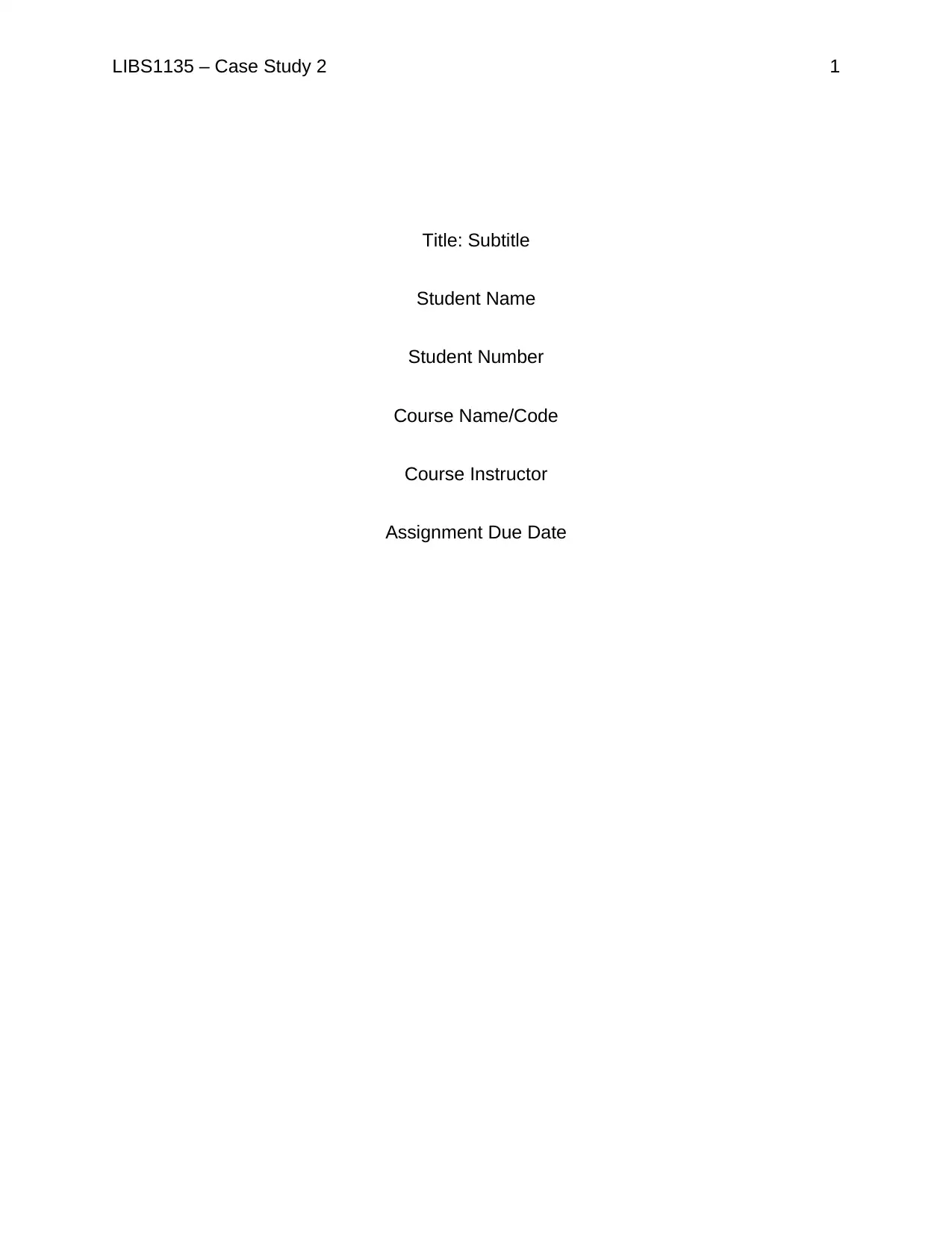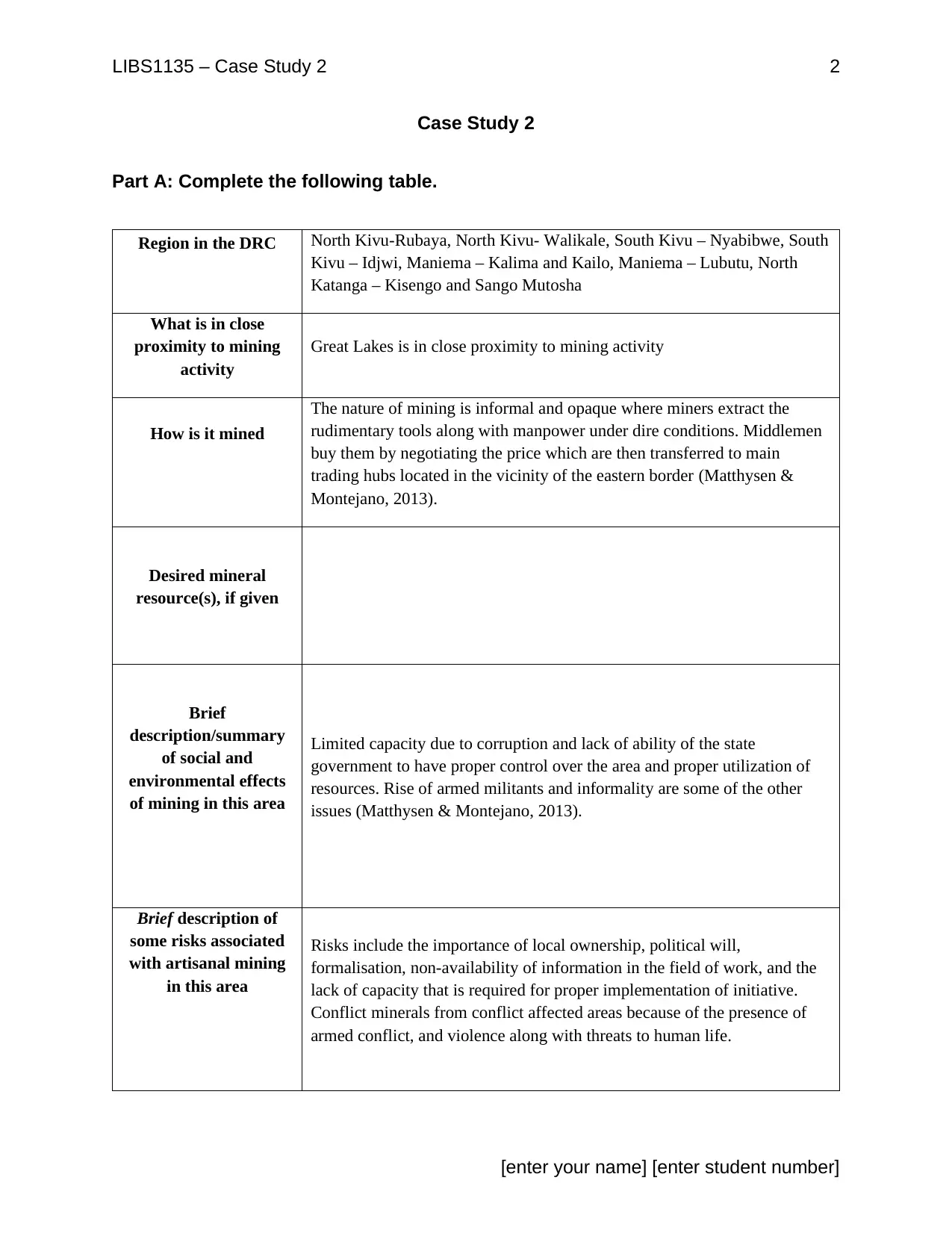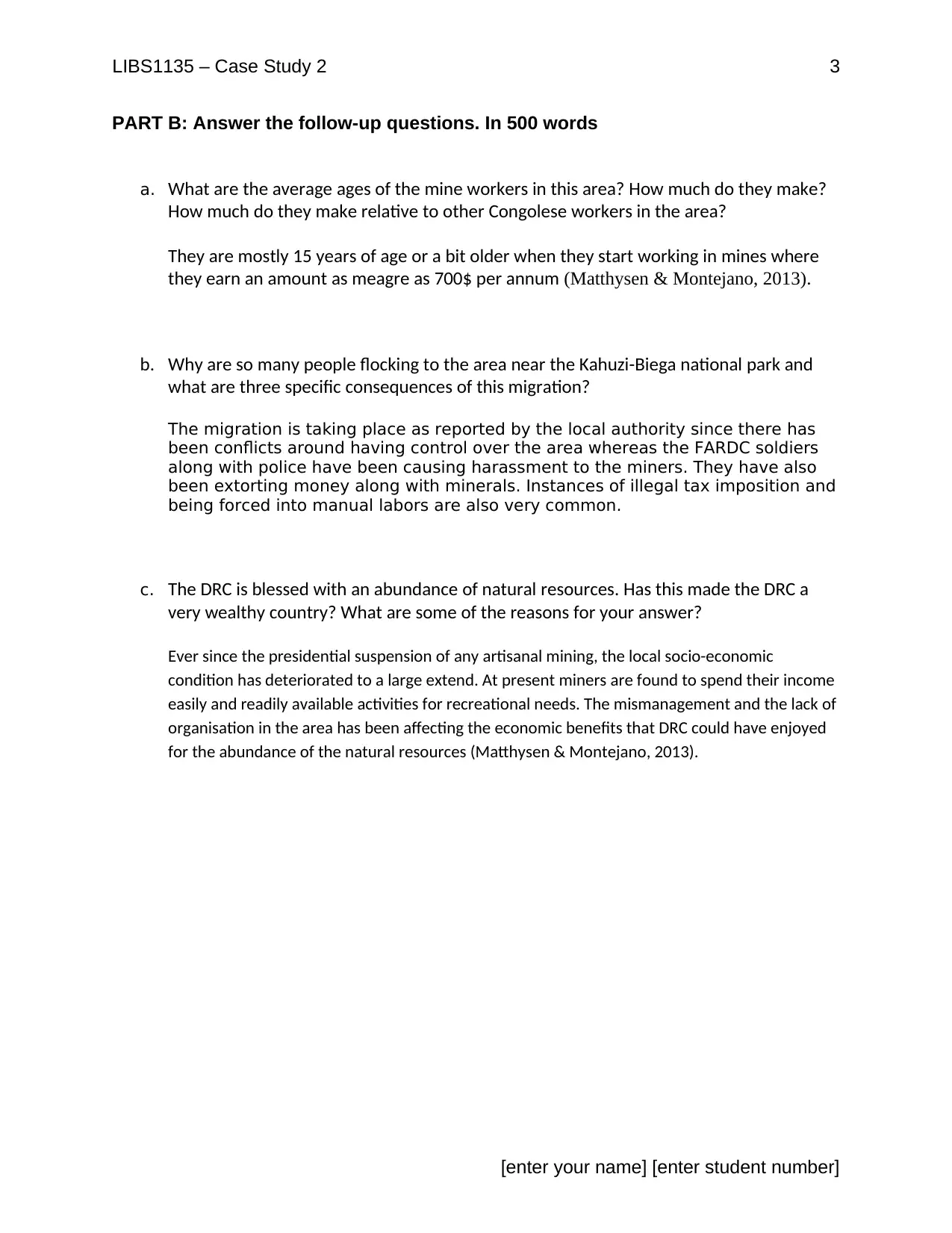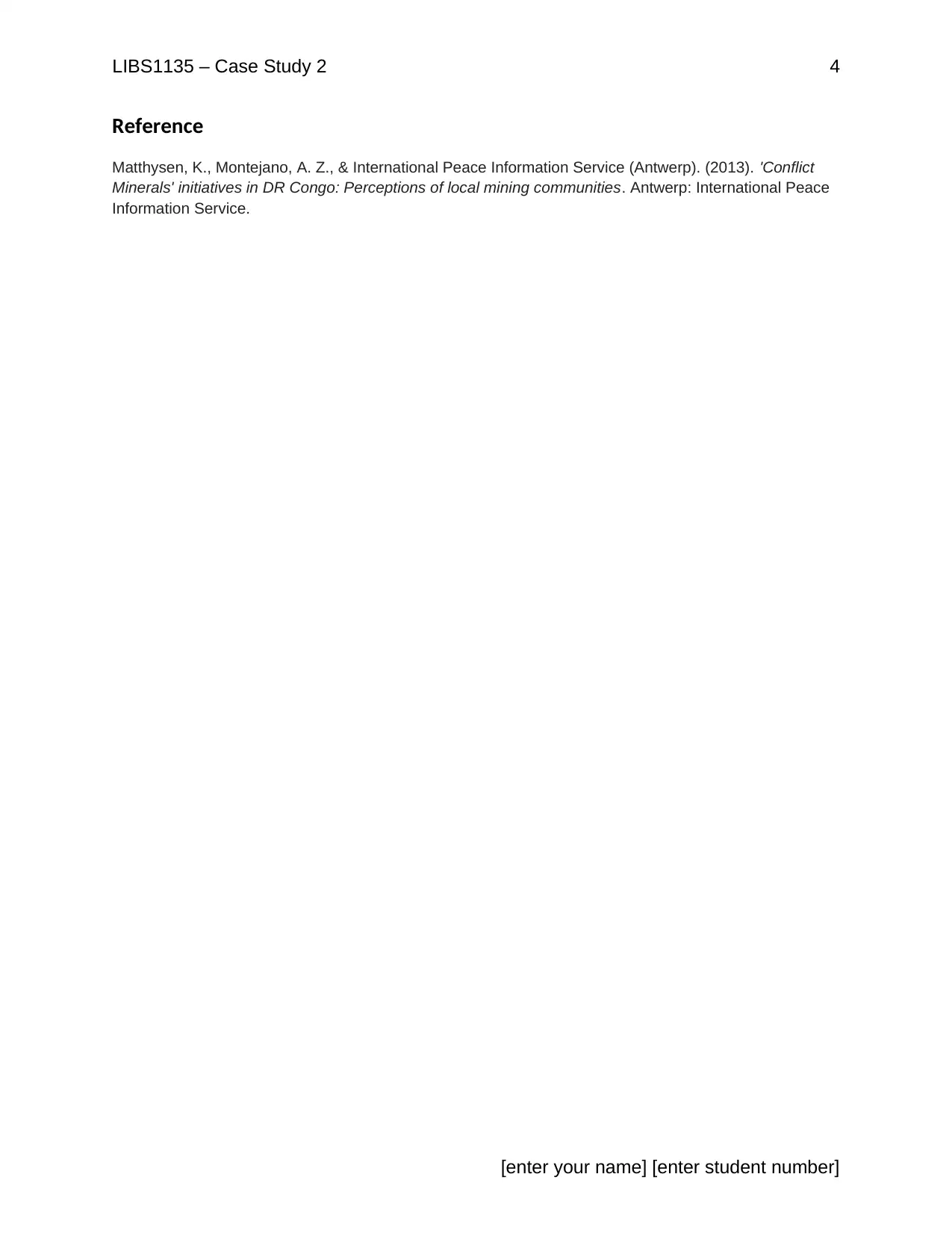LIBS1135 Case Study 2: Conflict Minerals & DRC Mining Analysis
VerifiedAdded on 2022/09/10
|4
|609
|22
Case Study
AI Summary
This case study, based on the provided assignment and brief, examines the 'Conflict Minerals' initiatives in the Democratic Republic of Congo (DRC), focusing on the perceptions of local mining communities. It delves into the social, environmental, and economic impacts of mining in various regions of the DRC, including North Kivu, South Kivu, and Maniema. The case study highlights the informal and often dangerous conditions of artisanal mining, the exploitation of workers (including child labor), and the role of conflict minerals in perpetuating insecurity. It explores the low wages of mine workers, migration patterns, and the complex relationship between the DRC's natural resources and its economic development. The study also addresses the consequences of migration near the Kahuzi-Biega national park and the challenges of managing and regulating the mining sector, including corruption and the influence of armed groups. The assignment also analyzes the impact of the presidential suspension of artisanal mining on the local socio-economic conditions. It references the work of Matthysen and Montejano, providing a comprehensive overview of the issues and challenges in the DRC's mining industry.
1 out of 4






![[object Object]](/_next/static/media/star-bottom.7253800d.svg)